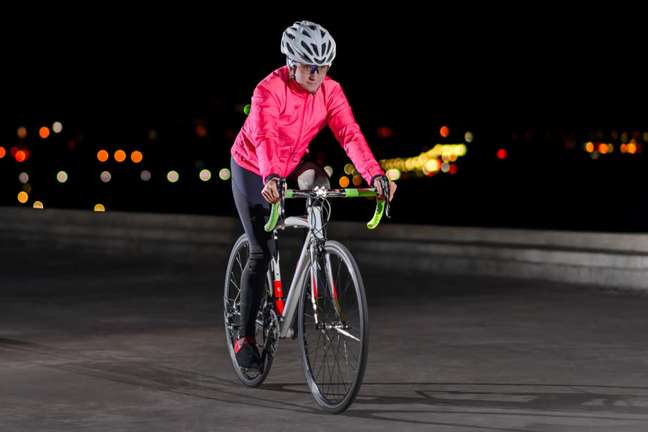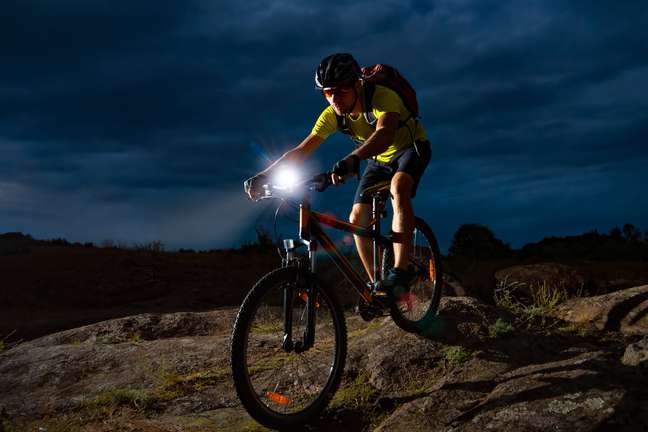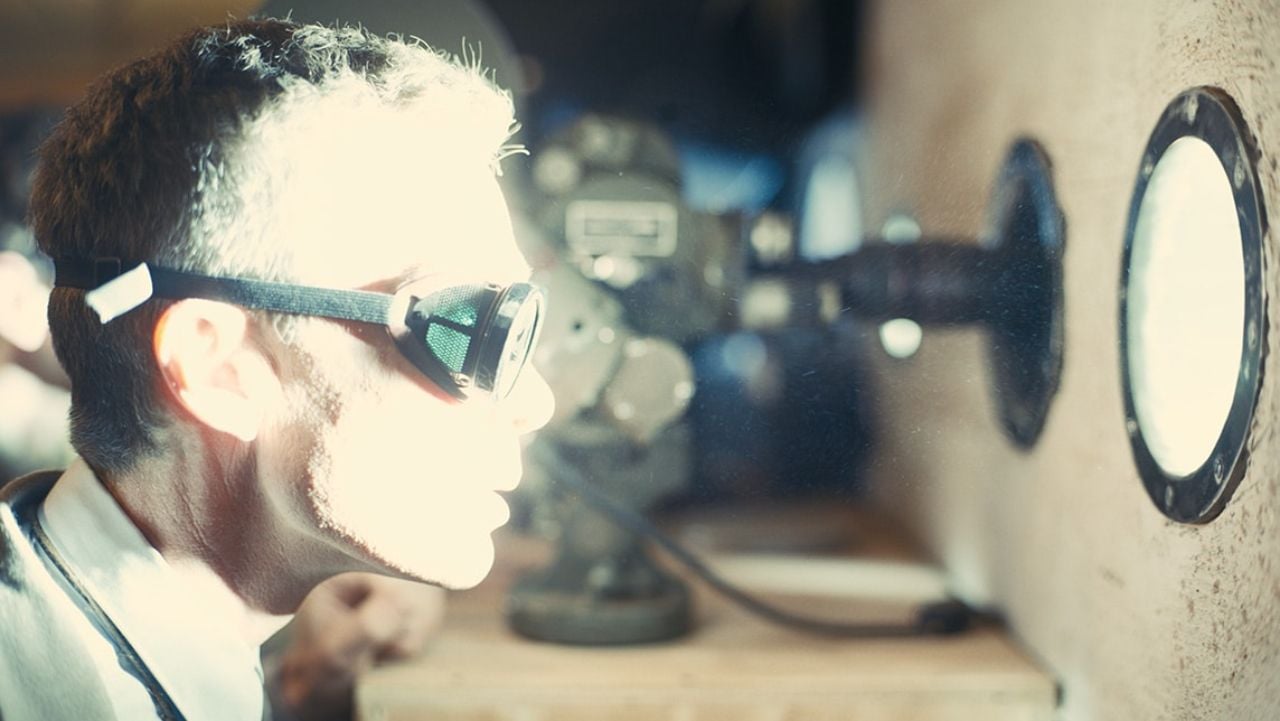Check what precautions are essential to pedal smoothly and avoid accidents
Many people can only ride at night, others prefer the night for quieter rides or lower temperatures. Whatever the reason, we have compiled some suggestions to make you ride at night in a safer way and, consequently, more serene.

1. Be an enlightened being
Getting the lighting right might seem like obvious advice, but there are details that many overlook. One of them is the power of the flashlight you have in yours bike: Flashlights made for urban environments probably won’t have enough power to light up places without street lighting or off-road environments, especially trails.
So, just one very bright light with a wide beam fixes it? Not exactly… If you ride in both environments, having two sets of bike lights is ideal. On a trail, you can and probably should use a very bright flashlight, while in an urban environment, you should not only turn the current down, but be careful not to shine the light in the wrong places – such as houses, other cyclists, and vehicles.
Use two sets of torches
An even better idea is to use both sets of lights installed on the bike at the same time. Right! You can use, for example, a flashing front light to make your presence clearer, while another flashlight light the way before you. The same goes for the rear of the bike. Having a steady light along with a flashing light makes it easier for oncoming vehicles to determine the distance to you.
Opt for helmets with flashlights
Another useful addition is a helmet-mounted flashlight. Not only does it allow you to illuminate the direction you are looking in which is very useful when cornering, but it is also invaluable if you need to do any maintenance on the bike. Keep in mind, however, that a heavy helmet-mounted flashlight will be uncomfortable and may cause the helmet to move on your head.
Two. Let others see you clearly
It’s not just about having dozens of flashing lights on your bike and helmet – it’s also about where you ride. Think about it: in an urban setting, your bike lights won’t be the only lights in the room. A driver can easily miss the presence of him camouflaged by the many city lights.
Therefore, try to drive to a place where you can be easily seen. Drivers mostly look straight ahead, so on a highway or motorway, pedal in their field of vision. This translates into being closer to the road, at the shoulder edge.
3. Be lit in profile
For this you can count on the help of two things: lights that offer lateral visibility and reflectors. That’s right, spotlight! Studies show that they are very effective in the safety of cyclists. The reflectors send the light directly back to the oncoming vehicle. Some specific reflectors, such as pedal reflectors, generate reflections in characteristic movements, which quickly let others know that it is a bicycle.
Clothing can also have reflectors. And Do you live with reflectors are more effective than transparent or high-visibility clothing. Another handy place for a reflector is on your gloves — it lets drivers see when you’re hand signaling.
4. Be careful where you point the light
With the advent of LEDs, small and surprisingly powerful flashlights have become commonplace. Some flashlights can be much more powerful than a car’s headlights. So beware. Too much light and light in the wrong place can be the same as walking in the dark. Make sure your flashlight doesn’t affect the vision of other road users, otherwise serious accidents could occur.

5. charge the batteries
First of all, always leave the house with fully charged batteries. Some bicycle light models allow you to change the battery. In these cases, extra batteries are welcome. Having more than one set of lights on bike it is also useful for another reason: it prolongs the autonomy.
Two low-wattage lights produce medium-intensity light, but last much longer than a single medium-wattage light. Also, if one of them fails, you don’t stay in the hand. If the ride is too long or too dark, two things will come in handy: having spare batteries or a dynamo in the front wheel to generate power.
6. Manage the power of the torches
Manage the battery power of your torches. Use what you need, nothing more. This is more important than it seems. If your flashlight battery dies in the middle of a trail, not only will you have an unpleasant experience on the way home, but you could also have an accident when you run out of lights.
7. pay attention around
This is especially true for those who have no night driving experience. Keep an eye out for potential hazards, they’ll be harder to see at night. Even if your cycling route is a familiar place, be careful. Everything will look very different at night.
If your pedal environment is a track, even more careful! The possibility of obstacles and dangers is much greater. One more point: if your route includes jumps, it’s best to avoid them at night. Even if they are known, it is very difficult to calculate how far to reach the ground in low light conditions.
If you are riding in a group, leave enough space between you and the cyclist in front so that your bike light does not cast shadows in the path of the bikes ahead, obscuring the vision of the cyclists ahead. Also beware of very powerful taillights.
8. Invest in a coat
If you ride at night in winter, you already know the importance of dressing properly. But it is important to underline that the climate is not totally predictable, as is the thermal sensation generated in every place and situation. Therefore, it’s helpful to always have extra clothing, such as gloves, jackets, leggings, and thicker cuffs, with you.
Driving in the wet will make things worse in the cold. Therefore, even if the forecast does not predict rain, have sturdy clothes to water is cautious. If rain is guaranteed, waterproof clothing is best. And remember that in some places, even in the mild or hot seasons, it can get cold at night.
9. Tell friends and family about the journey
Someone needs to know where you are going and how long it will take to get there and back. If you are driving in an off-road environment, it may not be possible to receive a phone call if something goes wrong. This is where an informed friend comes in that he noticed you didn’t get home in time.
Don’t count on the help of strangers for these cases. First, there will be few people wandering around at night, especially in secluded places. Also, the likelihood of asking the wrong person for help is greater. You will also cool down quite quickly at night if you don’t move. That’s why we’re beefing up the tip about extra coats—you’ll need them if you have an unexpected layover on an overnight trip.
Text originally published in the review Bicicleta (Edition 120).
By Editora Bicicleta
🇧🇷The best content in your email for free. Choose your favorite Terra newsletter. Click here!
Source: Terra
Ben Stock is a lifestyle journalist and author at Gossipify. He writes about topics such as health, wellness, travel, food and home decor. He provides practical advice and inspiration to improve well-being, keeps readers up to date with latest lifestyle news and trends, known for his engaging writing style, in-depth analysis and unique perspectives.








